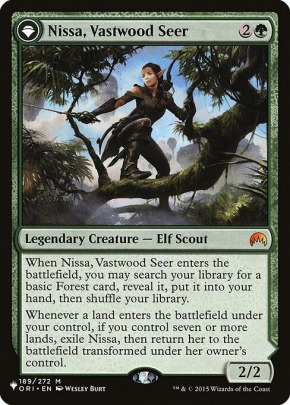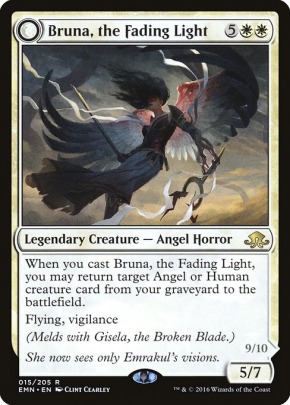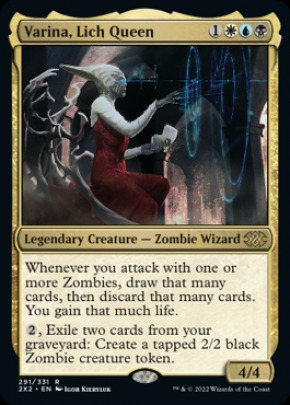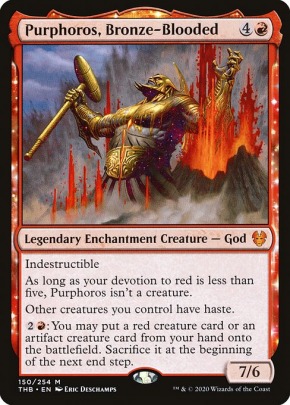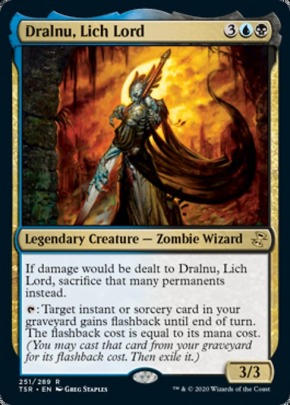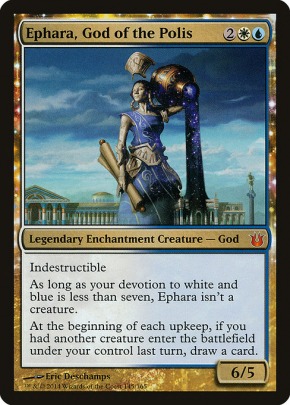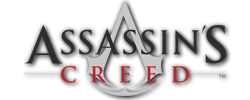Lately, I've been running more and more often out of cards during games, having to resort to topdeck mode. And I'm struggling to resolve the issue. Of course, you could simply "run more card draw cards", but even though cards like Tidings or Blue Sun's Zenith allow for card draw, you are 'taking a turn off' so to speak in order to reload. On the contrary, I've also seen decks where the player can continue playing his game while somehow keeping his hand full. How they do that I don't know.
So how do you approach card draw specifically when building your decks, making sure you keep your hand stocked while at the same time actually executing your game plan?
Maintaining enough cards
- Ertai Planeswalker
- Posts: 143
- Joined: 5 years ago
- Pronoun: he / him
- Location: Apeldoorn, The Netherlands
I usually run a spectrum of card draw in terms of how heavy or light they are. Small stuff like Night's Whisper as well as big reloads like Promise of Power or Pull from Tomorrow. Often, I'll play something to draw while playing other things, and the big reloads are for when I've committed a lot to the board and don't have to 'keep up' with more stuff that's just going to get wiped away.
- toctheyounger
- Posts: 4011
- Joined: 5 years ago
- Pronoun: he / him
- Location: Auckland, New Zealand
It really does depend on your build, it looks so different depending on your colors and archetype.
-
Hawk Slayer of Threads
- Posts: 1175
- Joined: 5 years ago
- Pronoun: he / him
- Location: Salt Lake City, UT
I aim for a minimum of 10 cards that help "card flow". Some players are strict on what that means - that requires cards that specifically say "draw 2+ cards" and thus are always card positive. That's not my definition - to me, "hand fixer cantrips" (like Brainstorm, Preordain, Ponder et al) and loots (like Faithless Looting and Frantic Search) still count, as do tutors like Demonic Tutor and graveyard manipulating cards like Eternal Witness or Sun Titan. 10 is a true hard minimum; if my commander doesn't themselves help with card flow I typically run more than that. Most critically, I like to curve this stuff out - taking early turns off to sculpt a great hand, graveyard, and top of library is a great way to play on curve and keep your hand reasonably smooth and full of options while still developing the board. Most of my decks are engine-heavy as well, and that helps; it means they have mana sinks to do cool stuff every turn without having to commit more cards from hand to board, or have little synergy pieces that generate virtual card advantage.
As a for instance, let's look at my Quintorius deck (mostly since it's the deck most on my mind as my newest deck). This is a deck in Boros, the worst cardflow colors, and it's a pretty budget deck with no big money cards to help fix that problem. Nevertheless in 3 games, I have not yet had issues with going to top-deck mode. I've had hands without relevant stuff due to budget constraints requiring me to run niche/limited removal spells, and the deck has problems, but it finds a way to dig deep and find what it needs and have options each turn.
- This deck contains ZERO cards that are actually reliably card positive on their face. Ruin Grinder can be if opponents kill it while I have 5 or less cards in hand. Combustible Gearhulk can be if opponents let it be, but that's pretty suspect. Bomat Courier can be if I can get 3+ cards stacked under him and then sac him while my hand is empty or close to it but that's only realistic if I have it turn 1 or 2. Bag of Holding is probably the closest to it; as long as it doesn't get cracked before I open it it can (and has) been a pretty good midgame reload. Archaeomancer's Map is, I suppose, although it only draws basic plains. Reconstruct History should also reliably be card positive although it doesn't "draw" cards. We also have Conspiracy Theorist who is card positive as long as we can use the cards we discard to him that turn.
- However, even though all those effects are a bit suspect as far as card-positive cards go, the deck does have the ability to get some good early hand-fixing and grave-filling with Faithless Looting, Thrill of Possibility, and Thrilling Discovery digging a few cards into the deck. It also has Mishra's Bauble, Soul-Guide Lantern, and Scrabbling Claws to cantrip with, and those can all be recycled repeatedly with stuff like Scrap Trawler, Salvaging Station, Auriok Salvagers, Sun Titan, or Junk Diver to draw a fair number of cards. Expedition Map also "draws cards" even if its only lands and costs more to get off the ground - but it can for sure help keep the deck moving.
- Mind Stone and Commander's Sphere can also be cached in but are harder to recycle. Later on, Daretti, Scrap Savant can also repeatedly dig through our deck or can bring back key artifacts.
- We also have the ability to use stuff like Karmic Guide, Reveillark, Feldon of the Third Path, Teshar, Ancestor's Apostle, Sun Titan, and Hofri Ghostforge to get extra value out of our creatures which is virtual card advantage (and becomes real card advantage if the creatures they are targeting include Junk Diver, Solemn Simulacrum, Sun Titan, Combustible Gearhulk, and sometimes Bomat Courier or Burnished Hart).
So while on paper this deck has "zero card advantage cards", in actuality as all this stuff interacts and builds card flow a full quarter of the deck helps keep the deck chugging, all the way across the curve from 0 to 6 mana. This was a long post, but the idea I wanted to paint is that card flow is a full strategic approach to how the deck functions from turn 1 to turn 20.
As a for instance, let's look at my Quintorius deck (mostly since it's the deck most on my mind as my newest deck). This is a deck in Boros, the worst cardflow colors, and it's a pretty budget deck with no big money cards to help fix that problem. Nevertheless in 3 games, I have not yet had issues with going to top-deck mode. I've had hands without relevant stuff due to budget constraints requiring me to run niche/limited removal spells, and the deck has problems, but it finds a way to dig deep and find what it needs and have options each turn.
- This deck contains ZERO cards that are actually reliably card positive on their face. Ruin Grinder can be if opponents kill it while I have 5 or less cards in hand. Combustible Gearhulk can be if opponents let it be, but that's pretty suspect. Bomat Courier can be if I can get 3+ cards stacked under him and then sac him while my hand is empty or close to it but that's only realistic if I have it turn 1 or 2. Bag of Holding is probably the closest to it; as long as it doesn't get cracked before I open it it can (and has) been a pretty good midgame reload. Archaeomancer's Map is, I suppose, although it only draws basic plains. Reconstruct History should also reliably be card positive although it doesn't "draw" cards. We also have Conspiracy Theorist who is card positive as long as we can use the cards we discard to him that turn.
- However, even though all those effects are a bit suspect as far as card-positive cards go, the deck does have the ability to get some good early hand-fixing and grave-filling with Faithless Looting, Thrill of Possibility, and Thrilling Discovery digging a few cards into the deck. It also has Mishra's Bauble, Soul-Guide Lantern, and Scrabbling Claws to cantrip with, and those can all be recycled repeatedly with stuff like Scrap Trawler, Salvaging Station, Auriok Salvagers, Sun Titan, or Junk Diver to draw a fair number of cards. Expedition Map also "draws cards" even if its only lands and costs more to get off the ground - but it can for sure help keep the deck moving.
- Mind Stone and Commander's Sphere can also be cached in but are harder to recycle. Later on, Daretti, Scrap Savant can also repeatedly dig through our deck or can bring back key artifacts.
- We also have the ability to use stuff like Karmic Guide, Reveillark, Feldon of the Third Path, Teshar, Ancestor's Apostle, Sun Titan, and Hofri Ghostforge to get extra value out of our creatures which is virtual card advantage (and becomes real card advantage if the creatures they are targeting include Junk Diver, Solemn Simulacrum, Sun Titan, Combustible Gearhulk, and sometimes Bomat Courier or Burnished Hart).
So while on paper this deck has "zero card advantage cards", in actuality as all this stuff interacts and builds card flow a full quarter of the deck helps keep the deck chugging, all the way across the curve from 0 to 6 mana. This was a long post, but the idea I wanted to paint is that card flow is a full strategic approach to how the deck functions from turn 1 to turn 20.
Sufferer of EDHD
Commander: Current(ish) Arsenal
Daretti, Scrap Savant (Decklist) Yuriko, the Tiger's Shadow Samut, Voice of Dissent The Gitrog Monster (Decklist)Quintorius, Field Historian
Volo, Guide to Monsters Sevinne, the Chronoclasm
----
Heliod, Sun-crowned Mirri the Cursed Mirri, Weatherlight Duelist Sygg, River Guide Jeska, Thrice Reborn // Falthis, Shadowcat Familair // Obosh the Preypiercer
Miara, Thorn of the Glade//Numa, Joraga Chieftain Arcades, the Strategist Phelddagrif Varina, Lich Queen
Daretti, Scrap Savant (Decklist) Yuriko, the Tiger's Shadow Samut, Voice of Dissent The Gitrog Monster (Decklist)Quintorius, Field Historian
Volo, Guide to Monsters Sevinne, the Chronoclasm
----
Heliod, Sun-crowned Mirri the Cursed Mirri, Weatherlight Duelist Sygg, River Guide Jeska, Thrice Reborn // Falthis, Shadowcat Familair // Obosh the Preypiercer
Miara, Thorn of the Glade//Numa, Joraga Chieftain Arcades, the Strategist Phelddagrif Varina, Lich Queen
Two generally useful strategies for card advantages are to run cards that let you draw cards for doing what the deck already does or to be able to get extra use out of your individual cards.
Jhoira, Weatherlight Captain and Vedalken Archmage are great in artifact decks, as they draw you a card when you cast an artifact (or historic, for Jhoira) spell. Lifecrafter's Bestiary, Beast Whisperer and Guardian Project do the same thing for creatures, as do a number of other green cards, including some that only trigger for casting creatures of a certain size (Garruk's Uprising, for example) There are other cards that draw you cards when creatures (your own, or sometimes others') die. Those are great in aristocrat sorts of builds. Archmage Emeritus does the same when you cast instants or sorceries. Aesi and Tatyova turn ramp and landfall into card draw. By supplementing more traditional card draw with a few of these appropriate to your deck's plan, you should be able to avoid topdeck mode.
Another good card advantage strategy is the capacity to reuse resources, essentially making your graveyard an extension of your hand. Reanimator/Recursion strategies broadly work this way, and some popular and powerful commanders (Karador, Meren, Alesha, Muldrotha, Kess) go a long way in enabling such strategies. Ogir represents an unusual and interesting variant of this plan. Adventure creatures from Eldrane are another way to get more than one use out of a card, though of limited value given how few there are and how few of the existing ones are actually good. Cards with abilities like flashback and jump-start that function from the graveyard have built-in reuse options. Anyhow, the idea is that if you have ways to reuse your resources from the graveyard, you are less dependent on what you happen to have in your hand.
Jhoira, Weatherlight Captain and Vedalken Archmage are great in artifact decks, as they draw you a card when you cast an artifact (or historic, for Jhoira) spell. Lifecrafter's Bestiary, Beast Whisperer and Guardian Project do the same thing for creatures, as do a number of other green cards, including some that only trigger for casting creatures of a certain size (Garruk's Uprising, for example) There are other cards that draw you cards when creatures (your own, or sometimes others') die. Those are great in aristocrat sorts of builds. Archmage Emeritus does the same when you cast instants or sorceries. Aesi and Tatyova turn ramp and landfall into card draw. By supplementing more traditional card draw with a few of these appropriate to your deck's plan, you should be able to avoid topdeck mode.
Another good card advantage strategy is the capacity to reuse resources, essentially making your graveyard an extension of your hand. Reanimator/Recursion strategies broadly work this way, and some popular and powerful commanders (Karador, Meren, Alesha, Muldrotha, Kess) go a long way in enabling such strategies. Ogir represents an unusual and interesting variant of this plan. Adventure creatures from Eldrane are another way to get more than one use out of a card, though of limited value given how few there are and how few of the existing ones are actually good. Cards with abilities like flashback and jump-start that function from the graveyard have built-in reuse options. Anyhow, the idea is that if you have ways to reuse your resources from the graveyard, you are less dependent on what you happen to have in your hand.
I have 68 active EDH decks, with more in progress. I don't consider this a problem. Do you?
I am also one of those barbarians who enjoys winning by turning creatures sideways.
I am also one of those barbarians who enjoys winning by turning creatures sideways.
I typically use my commander as a draw engine and try to avoid too many things that are draw focused.otherwise. I like to have as many interesting cards in a deck as possible and as little glue.
Cheeky answer: run Chulane, Teller of Tales / Korvold, Fae-Cursed King / Tatyova, Benthic Druid / other card draw in the command zone.
Actual answer: I generally run a mix of incremental card draw (such as Fact or Fiction, Painful Truths, or Blue Sun's Zenith) and card advantage engines (such as Phyrexian Arena, Salvaging Station, Skullclamp, or Beast Whisperer). If an engine is active, then the 1-2 extra cards I draw each turn are usually enough to keep my hand full. If I don't have an engine available, I use incremental card draw to dig myself to one.
I don't think it's feasible to keep a full hand with only incremental card draw - if you need to cast a Divination every turn to keep your hand full, that's a significant tax on your mana and deck slots. Simultaneously, it you only run card advantage engines, you're more vulnerable to disruption (plus these engines are often redundant in multiples, especially if they cost mana to use). A mix is often going to yield a more stable card flow.
I'll also note that there are a lot of low-investment card advantage engines available in the manabase - stuff like Life from the Loam + cycling lands, Castle Locthwain, and War Room. If you're running a more aggressive deck, Throne of the High City or another way to get Monarch in the game may be worth consideration.
Actual answer: I generally run a mix of incremental card draw (such as Fact or Fiction, Painful Truths, or Blue Sun's Zenith) and card advantage engines (such as Phyrexian Arena, Salvaging Station, Skullclamp, or Beast Whisperer). If an engine is active, then the 1-2 extra cards I draw each turn are usually enough to keep my hand full. If I don't have an engine available, I use incremental card draw to dig myself to one.
I don't think it's feasible to keep a full hand with only incremental card draw - if you need to cast a Divination every turn to keep your hand full, that's a significant tax on your mana and deck slots. Simultaneously, it you only run card advantage engines, you're more vulnerable to disruption (plus these engines are often redundant in multiples, especially if they cost mana to use). A mix is often going to yield a more stable card flow.
I'll also note that there are a lot of low-investment card advantage engines available in the manabase - stuff like Life from the Loam + cycling lands, Castle Locthwain, and War Room. If you're running a more aggressive deck, Throne of the High City or another way to get Monarch in the game may be worth consideration.
-
Guardman A Dog's Dream of Man
- Posts: 1771
- Joined: 4 years ago
- Pronoun: he / him
- Location: In a Turn-Based World
It really comes down to your commander/deck. I have four decks built right now and they each have a different definition of card advantage and how they want to "draw" cards.
My Etali, Primal Storm deck doesn't really care about cards in hand. It has some rummaging effects and wheels, but those are more about finding cards that support Etali for the most part as the deck mostly cares about protecting Etali and making sure she can attack, as Etali generates all of the card advantage the deck needs. And this card advantage it does have is in the form of lands like Arch of Orazca and War Room.
My Adrix and Nev, Twincasters doesn't want traditional card draw. It needs repeatable card draw that it doesn't have to continuously put mana into more than once as it needs to be creating tokens every turn to win. It is better served by playing Toski, Bearer of Secrets and as many similar effects as him as possible.
My The Omenkeel deck doesn't need to run too many lands or really play any lands from hand once it gets going. As such, it can play free spells like Foil, looting effects like Trade Routes, and weird and conditional draw engines like Agent of Treachery, Ghostly Pilferer, and Fallowsage that both advance what the deck wants to do (having creatures to tap to crew vehicles) while providing card draw as a bonus. A lot of the card advantage from the deck is playing into the theme of the deck of crewing vehicles and playing your opponents' lands.
Finally my Toggo, Goblin Weaponsmith / Falthis, Shadowcat Familiar Treasure Deck plays more traditional draw options like Painful Truths, Phyrexian Arena, and Combustible Gearhulk, along with more deck specific options like Keskit, the Flesh Sculptor, since it doesn't mind paying mana to draw cards.
My Etali, Primal Storm deck doesn't really care about cards in hand. It has some rummaging effects and wheels, but those are more about finding cards that support Etali for the most part as the deck mostly cares about protecting Etali and making sure she can attack, as Etali generates all of the card advantage the deck needs. And this card advantage it does have is in the form of lands like Arch of Orazca and War Room.
My Adrix and Nev, Twincasters doesn't want traditional card draw. It needs repeatable card draw that it doesn't have to continuously put mana into more than once as it needs to be creating tokens every turn to win. It is better served by playing Toski, Bearer of Secrets and as many similar effects as him as possible.
My The Omenkeel deck doesn't need to run too many lands or really play any lands from hand once it gets going. As such, it can play free spells like Foil, looting effects like Trade Routes, and weird and conditional draw engines like Agent of Treachery, Ghostly Pilferer, and Fallowsage that both advance what the deck wants to do (having creatures to tap to crew vehicles) while providing card draw as a bonus. A lot of the card advantage from the deck is playing into the theme of the deck of crewing vehicles and playing your opponents' lands.
Finally my Toggo, Goblin Weaponsmith / Falthis, Shadowcat Familiar Treasure Deck plays more traditional draw options like Painful Truths, Phyrexian Arena, and Combustible Gearhulk, along with more deck specific options like Keskit, the Flesh Sculptor, since it doesn't mind paying mana to draw cards.
- PrimevalCommander
- Posts: 948
- Joined: 5 years ago
- Pronoun: he / him
There is a balance between creating synergies with what your deck already wants to do, and playing some basic refill draw effects. Too many plain draw effects dilute your primary strategy and tax your mana. The first step is to determine a deck's primary goal and path to victory, then find cards that can facilitate that goal while creating value. Cards that have multiple modes can help, with Mystic Confluence being one of my favorite blue instants right now. Last you fill any gaps with standard draw effects to get you over the hump if your synergies aren't firing yet. If your commander has "Draw a Card" on it, then you build around triggering that as much as possible. If your commander doesn't have that, then you find things that say "Draw a Card" when you do what your deck wants to do, whether that be casting enchantments, creatures dying, creatures ETB, casting artifacts, casting instants/sorceries, attacking with creatures, making large creatures, making a bunch of land drops, making tokens. All of these things have cards that can create added value off them, including drawing cards or creating card advantage.
I'll throw out some examples of synergy cards.
Draw-Refills
I'll throw out some examples of synergy cards.
- Scrap Mastery
- Lilliana's Standard Bearer
- Greater Good
- Life from the Loam
- Archmage Emeritus
- Muldrifter
- Underworld Breach
- Enchantresses
- Vulturous Aven
- Garruk's Uprising
- Garruk's Packleader
- Birthing Pod
- Sun Titan
- Corpse Augur
- Tireless Tracker
- Double Vision
- Toski, Bearer of Secrets
- Grim Haruspex
- Midnight Reaper
Decklists
God-Eternal Oketra
Titania, Protector of Argoth
Karador, Ghost Chieftan
Kalamax, the Stormsire
Rocco WILD PAIR
Sefris of the Hidden Ways *Budget*(Page 4)
Zurzoth, Chaos RiderKalamax, the Stormsire
Rocco WILD PAIR
Sefris of the Hidden Ways *Budget*(Page 4)
God-Eternal Oketra
Titania, Protector of Argoth
-
TheAmericanSpirit Supreme Dumb Guy
- Posts: 2237
- Joined: 5 years ago
- Pronoun: he / him
- Location: IGMCULSL Papal Palace
I don't really think this is soley a matter of card draw; electing not to spew your hand in the first place is a great way to maintain CA and conserve resources. There's no need to run out additional threats into potential removal/wipes if you've already got a threat deployed unless you can meaningfully capitalize on the risk you're taking by doing so. IME, tight play and some careful sandbagging go a long way to keeping a player relevant throughout the game.
Of course, the obvious caveat is that all-in strategies don't really have the same luxury of time that control-oriented decks do, so YMMV. But there's never a need to just throw cards away to impatience or obliviousness.
Of course, the obvious caveat is that all-in strategies don't really have the same luxury of time that control-oriented decks do, so YMMV. But there's never a need to just throw cards away to impatience or obliviousness.
There's no biscuits and gravy in New Zealand.
(Except when DirkGently makes them!)
(Except when DirkGently makes them!)

